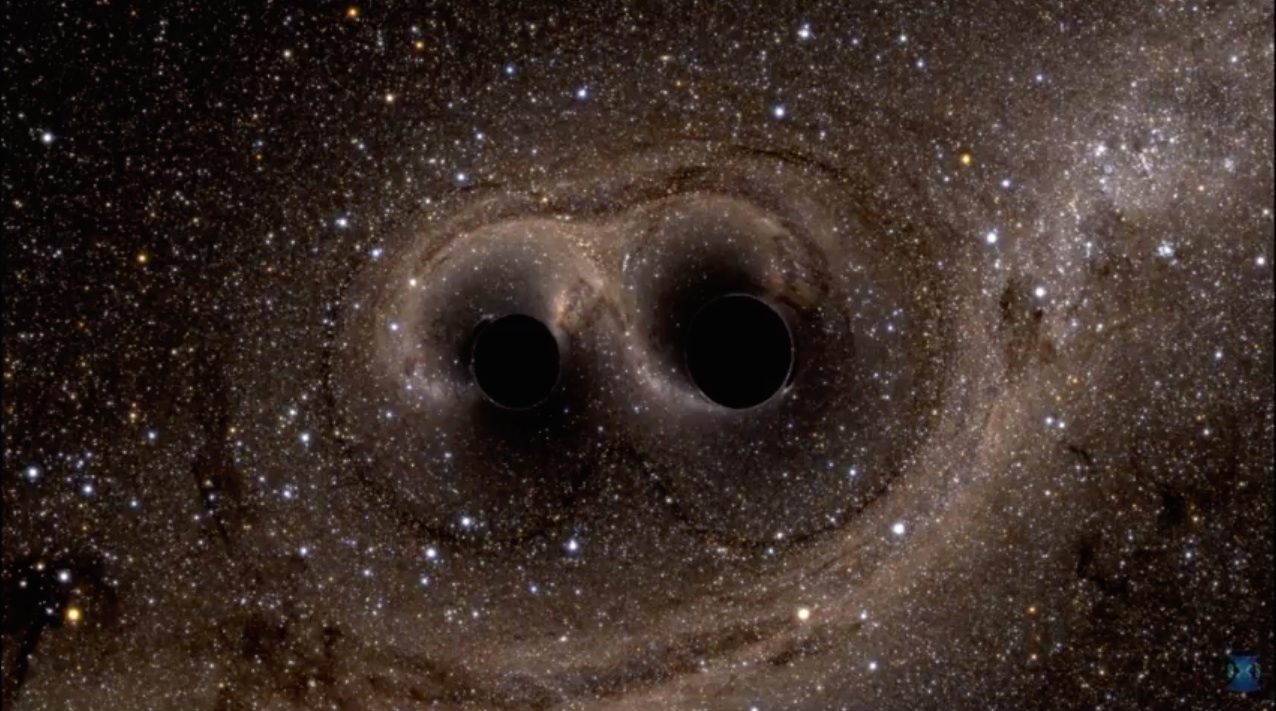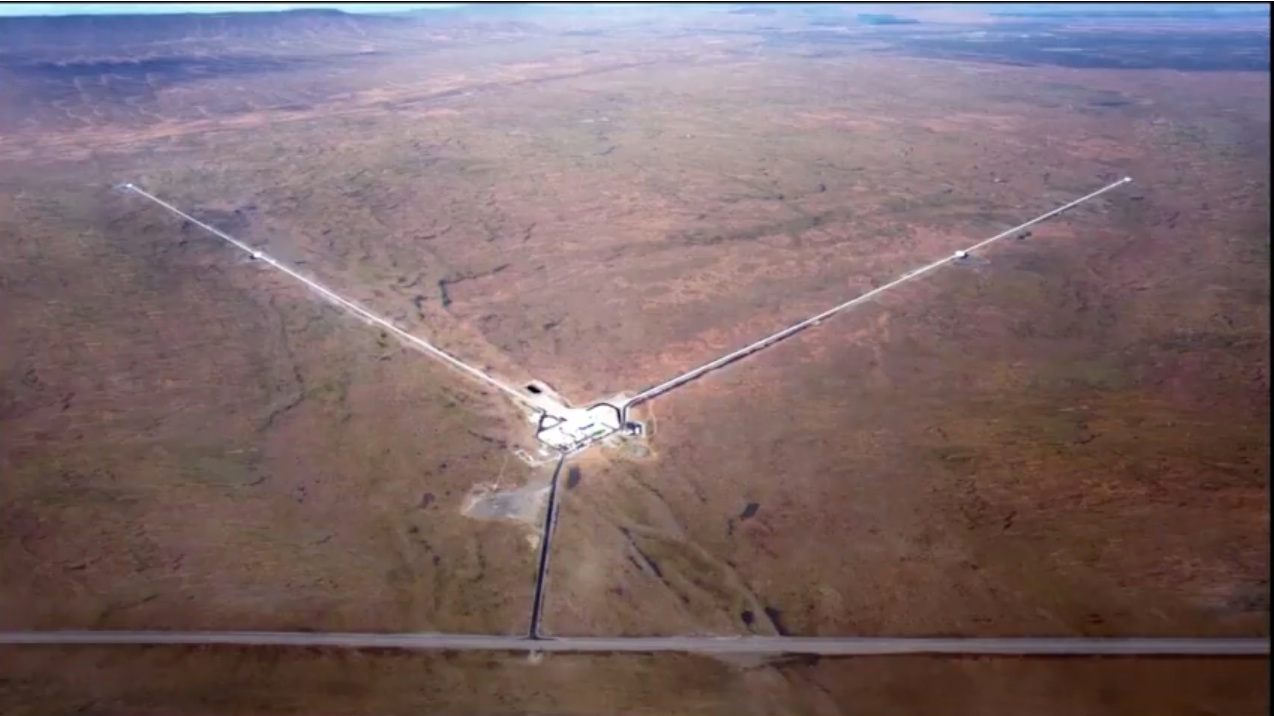Found: Gravitational Waves!!!

A computer simulation of the two colliding black holes that spawned the first gravitational waves ever detected. (All images: LIGO/YouTube)
It took 2 miles-long tubes, 1,000 scientists, 16 countries, and 25 years of work, but researchers at the Laser Interferometer Gravitational-Wave Observatory (LIGO) announced today that they have found the long-sought Waldo of the universe: gravitational waves.
As LIGO director Dave Reitze summed up at the beginning of this afternoon’s press conference, ”We did it!”
“It’s the first time the universe has spoken to us through gravitational waves,” Reitze said. “Up until now we’ve been deaf… but now we are able to hear them.”
Gravitational waves are, as Reitze put it, “dynamic perturbations in space-time”—effects of disturbances in the continuum, which propagate like light waves or ripples in a pond. Reitze and his team at LIGO have been searching for them since 1992.
The researchers were looking for these distortions in space by keeping close tabs on what is essentially a couple of extremely long hallways–one in Livingston, Louisiana, and one in Hanford, Washington. These tubes contain mirrors that can detect changes in distance as small as a thousandth of the diameter of proton. The researchers kept their eyes out for wiggles that resembled the gyrations of a black hole collision.
Last September, they got just that.

The LIGO observatory in Hanford, Washington.
Their observations are ”exactly what you would expect, what Einstein’s theory of relativity would predict” from two black holes spiraling together, said Reitze. During the press conference, the scientist showed the match between the signal they detected and the signal that computer models predicted—two squiggling lines laid almost exactly on top of each other.
Einstein predicted the existence of gravitational waves way back in 1915, as part of his Theory of General Relativity. The technology to detect them did not exist at the time, but if it had, Rai Weiss, one of the founders of LIGO said today, Einstein could have invented LIGO himself. The gravitational waves are the last piece of the theory yet to be proven, after astronomers and physicists have spent a century slowly piecing together evidence for the rest.
As many have already noted, this opens up a whole new field of astronomy. The signal the scientists detected is within the human hearing range: LIDO spokesperson Gabby Gonzalez played a slowed tape of it.
“Did you hear the chirp?” she asked the audience. “There’s a rumbling noise, and then there’s a chirp.” She played the tape again.
“That’s the chirp we’ve been looking for.”

LIGO data from Hanford and Livingston. The fact that it matched proved that the disturbance was not localized, but from far out in the universe.
This big discovery also came with a tasty side dish—the binary black holes whose collision provided the signal are also the first we have ever seen.
“Now that we know binary black holes are out there,” said Gonzalez, “We’ll begin listening to the universe.”
Every day, we highlight one newly lost or found object, curiosity or wonder. Discover something unusual or amazing? Tell us about it! Send your finds to sarah.laskow@atlasobscura.com.









Follow us on Twitter to get the latest on the world's hidden wonders.
Like us on Facebook to get the latest on the world's hidden wonders.
Follow us on Twitter Like us on Facebook